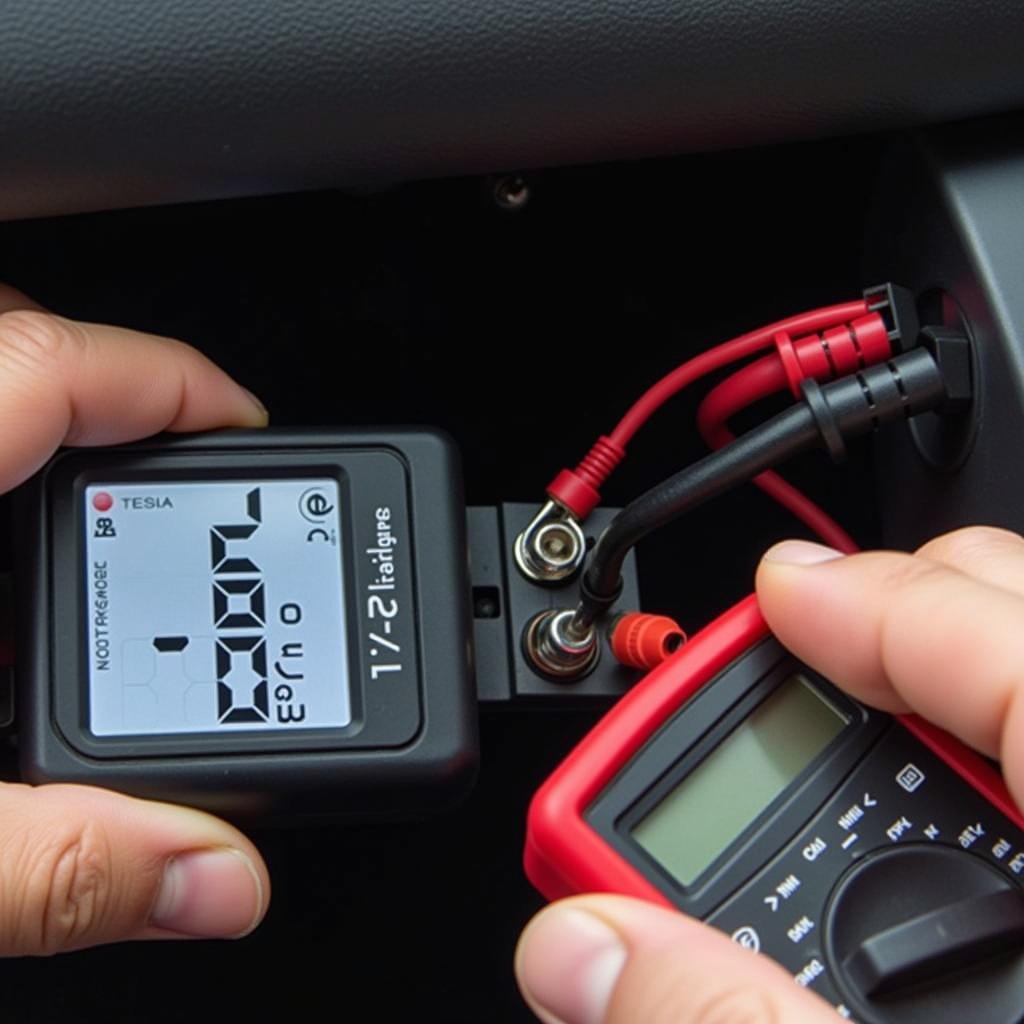That dreaded car low battery warning light can be a real heart-stopper. But before you panic, understanding what this warning truly means and how to effectively troubleshoot it can save you time, money, and a lot of stress. This article delves into the various reasons behind a car low battery warning, offers practical solutions, and provides expert advice for maintaining a healthy car battery.
A car low battery warning usually indicates that the battery’s voltage has dropped below the required level to power your vehicle’s essential systems. This could be due to a number of reasons, ranging from a simple loose connection to a more serious problem with the alternator. Knowing how to diagnose the issue is the first step to getting back on the road. If you’re unsure about any of the procedures outlined here, it’s always best to consult a qualified mechanic. If your key fob battery dies, will your car start? Find out more about this issue by clicking here: if my key fob battery dies will car start.
Why is My Car Displaying a Low Battery Warning?
Several factors can contribute to a car low battery warning. These include:
- Failing Alternator: The alternator is responsible for recharging the battery while the engine is running. A malfunctioning alternator won’t charge the battery properly, eventually leading to a low voltage warning.
- Old Battery: Car batteries have a limited lifespan. As a battery ages, its capacity to hold a charge diminishes, making it more susceptible to voltage drops.
- Parasitic Drain: This occurs when an electrical component continues to draw power even when the car is off, slowly draining the battery over time. Common culprits include interior lights, faulty wiring, or aftermarket accessories.
- Extreme Temperatures: Both extreme heat and cold can affect a battery’s performance. Cold weather can slow down the chemical reactions within the battery, reducing its capacity. Excessive heat can accelerate the battery’s aging process.
- Loose or Corroded Connections: A loose or corroded battery cable can prevent the battery from receiving a proper charge or delivering power to the vehicle’s systems.
Troubleshooting a Car Low Battery Warning
 Checking Car Battery Terminals for Corrosion
Checking Car Battery Terminals for Corrosion
Here are some steps you can take to troubleshoot a car low battery warning:
- Check the Battery Terminals: Inspect the battery terminals for any signs of corrosion or looseness. Clean any corrosion with a wire brush and baking soda solution. Tighten any loose connections.
- Test the Battery Voltage: Use a multimeter to test the battery’s voltage. A healthy battery should read around 12.6 volts when the engine is off. If the voltage is significantly lower, the battery may need to be replaced. For a comprehensive guide on battery discharge testing, visit: car battery discharge test.
- Test the Alternator: With the engine running, the battery voltage should be around 14 volts. If the voltage remains low, the alternator may be faulty.
- Check for Parasitic Drain: With the engine off and all accessories turned off, measure the current draw from the battery using a multimeter. A small drain is normal, but a high drain indicates a parasitic draw that needs to be investigated.
How to Prevent a Car Low Battery Warning
Maintaining your car battery can prevent future low battery warnings. Here are some tips:
- Regularly clean the battery terminals: Keep the terminals clean and free of corrosion to ensure good electrical connections.
- Have your battery tested periodically: A simple battery test can identify potential problems before they lead to a breakdown.
- Limit short trips: Short trips don’t give the alternator enough time to fully recharge the battery.
- Turn off all accessories when the car is off: This prevents parasitic drain and helps preserve battery life.
- Be mindful of extreme temperatures: Park your car in a garage or shaded area during extreme weather conditions. Consider using a battery blanket in extremely cold climates.
“Regular maintenance is key,” says automotive electrical expert, David Miller. “A simple check of your battery terminals and a periodic voltage test can go a long way in preventing unexpected low battery warnings.”
What to Do if Your Car Won’t Start After a Low Battery Warning
If your car won’t start, even after addressing the low battery warning, the problem may be more complex. It might not be the battery at all. For more insights on this, check out: car wont start but its not the battery. It’s essential to have a qualified mechanic diagnose the issue. They can determine if the problem lies with the starter, the ignition system, or another component. Sometimes, even a seemingly simple issue like wiring a car radio can cause unexpected electrical problems. For a comprehensive guide on car radio wiring, visit: wiring a car radio from scratch.
Conclusion
A car low battery warning isn’t something to ignore. Understanding the causes and taking proactive steps to troubleshoot and prevent this issue can save you from unexpected breakdowns and costly repairs. Remember, regular maintenance and timely intervention are crucial for a healthy car battery and a smooth driving experience. Don’t wait until you’re stranded on the side of the road with a dead battery – take action now to keep your car running smoothly. If you’re unsure about any aspect of car battery maintenance, consult a qualified mechanic for professional advice. A small investment in preventative maintenance can save you a lot of hassle in the long run.


